Mexican cuisine is super-rich. It is not just tacos, but also plenty of amazing local dishes, unique to Mexico. There is a lot to love when it comes to the taste of Mexico.
Today we will dedicate an article to Mexican cheeses. There are not many types of cheese here, but they are totally worth your attention. There are yellow melting cheeses like Oaxaca, Chihuahua, and Manchego, strong flavor cheeses like the Cotija cheese, and soft white cheeses like Panela and Requesón. Excellent choices for cheese lovers.
| Follow PackAndGo.info at: | |
| YouTube | @packandgo. |
| @packandgo.info | |
| X | @packandgoinfo |
| Bluesky | @packandgo.bsky.social |
| @packandgo.info | |
| TikTok | @packandgo.info |
The history of Mexican cheeses
The old Mexican civilizations like the Aztecs and the Maya didn’t produce any cheese. This is the reason why there was no cheese at all before the Europeans arrive on the continent in the 16th century. So then, the Spanish arrived and brought cows, goats, sheep, and all the knowledge to start producing cheese in Mexico. One of the first cheeses in Mexico was the Manchego cheese, which is Spanish by origin.
With time, the Europeans and the local Indigenous Mexicans started to share their knowledge and experience and create new types of cheeses.
Today there are a few, truly Mexican types of cheese, but still, Mexico is not a huge producer. You won’t find many Mexican kinds of cheese outside of the country. Only in the USA, you can find some like Chihuahua cheese, Manchego cheese, or Oaxaca.
If you want to try Mexican cheese, you will need to go to Mexico. There is no easy way.
Queso Oaxaca
Queso Oaxaca is a string type of cheese, made of cow’s milk, and offered in a form of cheese balls. The name comes from the state of origin – Oaxaca. Queso Oaxaca is mostly white but slightly yellowish. It is soft, easy-to-melt, with a very tender taste, and slightly salty.
Its look is unique. It looks like a ball made of strings. It is really fun to open the “node” of an Oaxaca cheese, and spread the strings on your hot food. It will melt and give a delicious finish to your dish.
It is used for quesadillas (traditional food similar to the tacos, but with cheese), sandwiches, tortas (Mexican alternative to burgers), queso fundido, filling for different dishes (chile relleno – filled chile).
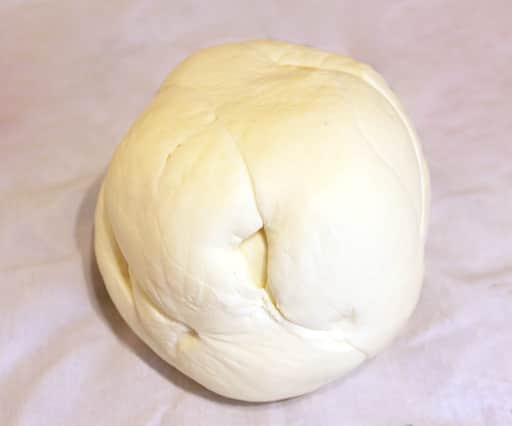
Queso Manchego
The Manchego cheese is originally from the region of La Mancha in Spain, but it is really popular in Mexico too. It is a yellow cheese, mostly consumed fresh (1-month aging) with a buttery texture, it is creamy with a delicate taste. The Spanish Manchego is made out of sheep’s milk, while the Mexican version is made of cow’s milk.
The Manchego cheese is very easy to melt. It is another multi-purpose cheese that you can put on different dishes, tortas, sandwiches, quesadillas, and more.
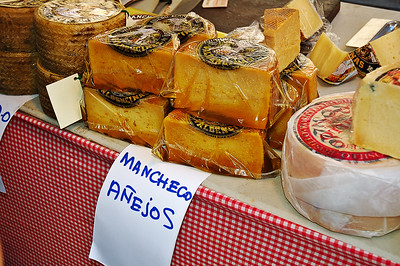
Queso Chihuahua
The Chihuahua cheese is a yellow cheese, that originated in the state of Chihuahua, in the north. It was first produced by the Mennonite community there, and later the recipe was adopted by the Mexicans.
Chihuahua cheese is excellent for melting, and you can compare its taste to Cheddar or Monterey Jack. It has a strong taste and it is aged for longer, than the Manchego and Oaxaca.
The Chihuahua cheese is often used for queso fundido (fondue-style melted cheese), quesadillas, choriqueso, chilaquiles, chile con queso (chilies with cheese), sandwiches, tortas, and other dishes.

Queso Cotija – the “Mexican Parmesan”
The Cotija cheese is often called the “Mexican parmesan” because it also has a very strong flavor. It comes from the town of Cotija, in the state of Michoacán. It is made of cow’s milk and it is white.
As we mentioned, it has a strong taste, very salty, long-aged cheese with a distinct smell.
The Cotija cheese is often crumbled or shredded on top of various Mexican dishes.
It is also used to flavor various salads, kinds of pasta, beans, and many antojitos (small fast food).
It is more expensive than the rest of the Mexican cheese on this list, but it is used in small quantities to add flavor, so it won’t break your budget.
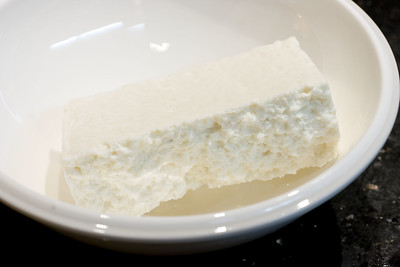
Queso Panela
The Panela cheese is a white cheese, made from cow’s milk with a very soft and creamy taste. It is similar to Cottage cheese, basket cheese from Turkey, or Paneer from India. It is also a fresh cheese.
The taste of Panela cheese is very soft, and it has almost no salt. It gives a smooth texture to your sandwich or dish and helps to enjoy the other flavors like sauces and spices.
The Panela cheese is used in quesadillas, different tortas, enchiladas, sandwiches, salads, and even grilled and offered as a dish.
You can find Panela cheese named Queso de canasta (basket cheese) because it is produced inside little baskets.
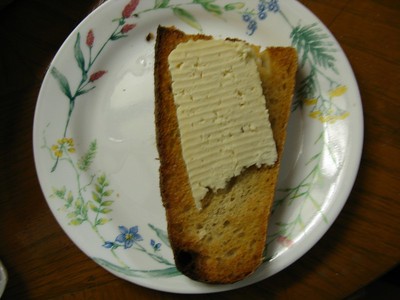
Queso fresco – fresh cheese
The queso fresco is a fresh white cheese, made from cow’s milk. It is a relatively cheap cheese, so you can find it on different street foods.
The taste of queso fresco is usually non-salty, although, on rare occasions, you can find salty variants too. It is a fresh cheese, so it doesn’t have a very strong taste. It feels a bit spongy while you chew it.
It is often used like the Panela cheese, shredded or crumbled on top of a meal, salads, beans, antojos, tortas, sandwiches, quesadillas, and more.
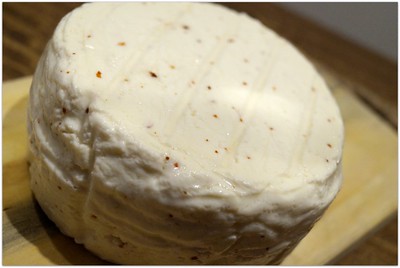
Queso Añejo – aged cheese
The Añejo cheese is the aged version of the Fresco cheese. It is made from cow’s milk and it has white in color. In rare cases, it could be produced from goat milk, so if you don’t like goat-milk products, ask before you order.
The taste is usually non-salty. It is drier than the Fresco and it is very easy to shred it or crumble it on top of different meals.
It is used the same way too – for salads, meals, tacos, quesadillas, tortas, sandwiches, antojos, and more.
Queso Enchilado – spicy cheese
The Enchilado cheese is another version of Añejo cheese with a big difference of added flavors. It will be covered with chiles and spices for additional taste. It is spicy, so it is great for fans of hot Mexican food.

Queso crema – cream cheese
The Queso Crema is typical cream cheese. White fat cheese, made of cow’s milk, with the purpose to spread it on bread and use for cheesecakes.
Nothing very special, it is just like you can imagine it. It is not a quality cheese and it is often made with a little percentage of real milk.

Queso Doble Crema
The Doble Crema cheese is a type of fresh cheese originally from Colombia, but very popular in Mexico too. It is produced from cow’s milk and typically has a white color, but it could be a bit yellowish too.
It has a creamy texture and has a plane surface. What distinguish it from the rest is its acid taste.
The Doble Crema is used for pizzas, sandwiches, tortas, and antojos.
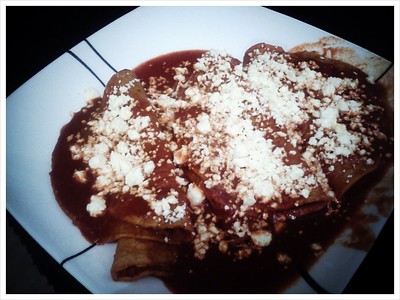
Queso Asadero
The Asadero cheese is another white, slightly yellowish, cheese from cow’s milk. It comes from the state of Chihuahua.
It has a string structure and creamy taste. Its flavor is relatively light and similar to the Mozzarella cheese. Honestly, for a foreigner like me, it is incredibly similar to Oaxaca cheese. Especially if it is sold like a cheese ball. You can also find it as a cheese bar, which looks more like a Manchego cheese.
The Queso Asadero is used for quesadillas, tacos, tortas, burritos, tostadas, sandwiches, filled chilis, salads and more.
You can also grill it, and it tastes delicious!
Requesón
Requesón cheese is a milk product, made from milk whey. It is the Mexican version of the popular Italian Ricotta cheese.
It is a fresh type of cheese, non-salty, white, creamy, with a slightly sweet taste. The texture can be compared to cottage cheese.
The Requesón cheese is used a lot in salads, different dishes, and even deserts, thanks to its low price.
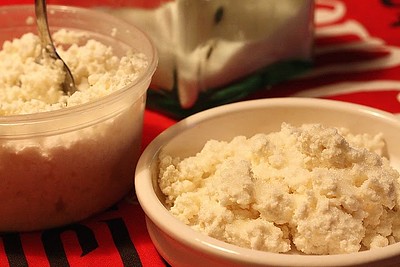
Quesillo
The Quesillo cheese can be found in almost every taqueria (taco stand).
The Quesillo cheese is a fresh, semi-fat, semi-hard, low-quality cheese.
It is used for many types of Mexican street foods like quesadillas, enchilada, tortas, tacos, antojitos, salads, and more.
It is cheaper than Oaxaca and Manchego cheeses, so it is often preferred by restaurant owners.
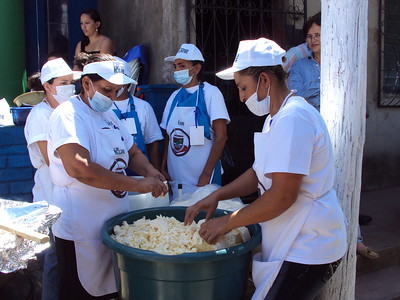
Queso de bola – Ball cheese
The Queso de Bola is a cheese, made from cow’s milk and sold in a form of a cheese ball. It is the Mexican version of the Dutch Edam cheese.
It comes from the town of Ocosingo, in the state of Chiapas.
If you visit the state of Chiapas, you can find Queso de Bola artisanal (handmade) in many shops.
It is also very popular in Yucatán.
The Queso de Bola is a semi-firm cheese with yellow color, with a strong flavor.
In Yucatán, Queso de Bola cheese is used for filled chiles (chile relleno), and other dishes as a finishing touch on top.

Conclusion
Now you know, Mexico is not just tequila, chilies and tacos. The country has some of the most amazing types of cheese in the world. Next time you visit it, go ahead and enjoy one delicious quesadilla with one of those cheeses.
If you ask me, for a personal recommendation, I would point you to Oaxaca cheese, Cotija cheese, and Manchego cheese. They are my 3 favorite Mexican types of cheese. Share your opinion with us,
| Follow PackAndGo.info at: | |
| YouTube | @packandgo. |
| @packandgo.info | |
| X | @packandgoinfo |
| Bluesky | @packandgo.bsky.social |
| @packandgo.info | |
| TikTok | @packandgo.info |
